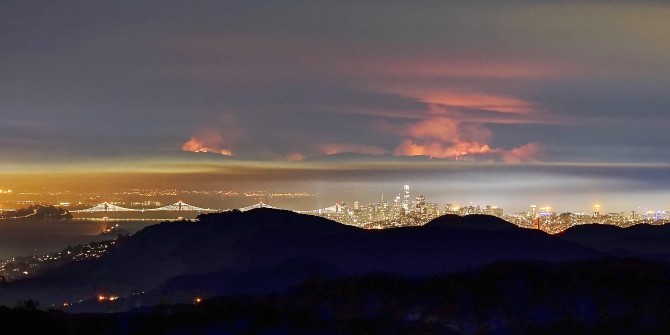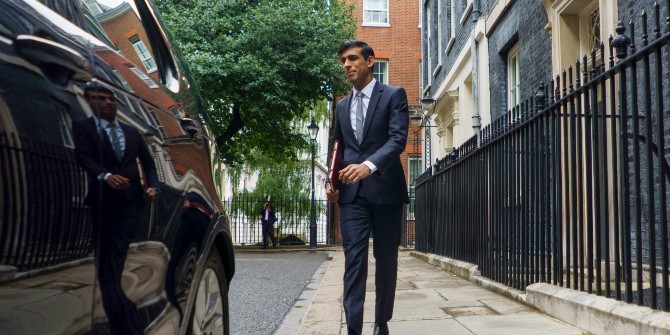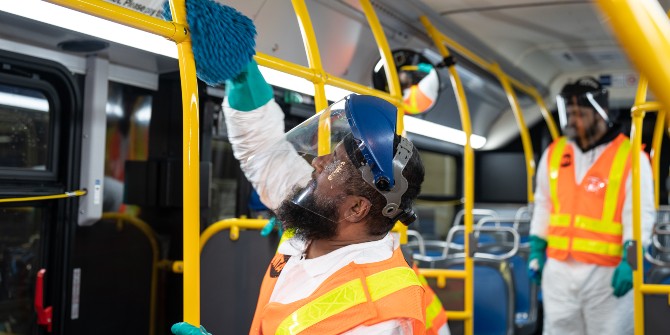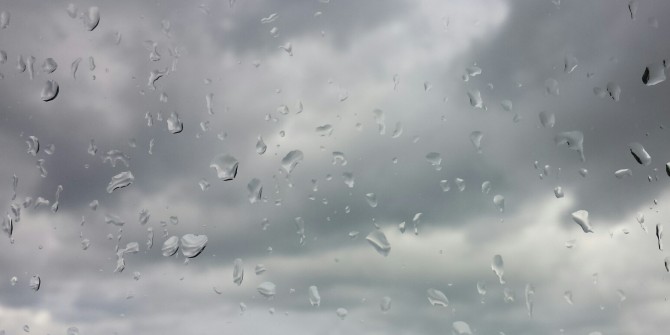Children’s education has been thrown into upheaval by the pandemic. Even bigger disruptions will follow. Yet we have failed to use the so-called ‘Great Pause’ to look again at what we need schools to do. In their new book, Valerie Hannon and Amelia Peterson (LSE) argue that we need serious debate about the purpose of our education systems.
Assumptions about our purpose in education are currently under-examined and out of date. For some, the shock of the 2020 COVID-19 pandemic raised questions about the functions of schooling. If so much could be done online, what were schools for? However, in general there was anxiety to get back to ‘normal’, albeit supplemented by a greater use of distance learning tools. In the end, within a context of so much disruption, little serious public debate about the fundamental job we need schools to do took place. Yet in the context of what some have described as ‘the pandemic Great Pause’, we have the opportunity to consider this question afresh.
There is no clear narrative or unifying ambition for public education today that both
● connects with the realities people are experiencing, and
● faces up to what can confidently be said to be on our horizon.
The 2020 pandemic illustrated how important a future-focus is. This book sets out the features of the future of our world around which there is strong consensus internationally from scientists and analysts. They include environmental, technological, demographic, socio-political and economic shifts. Taken together, they show that the scale of disruption our species and planet face is so profound that the risk of not changing outweighs that of doing nothing. Changes are needed so future generations are prepared to deal with these shifts–or, better still, to shape them. From the evidence, we extrapolate a set of three key shifts or ‘pivots’ in history that are likely to occur in the lifetime of today’s learners.

In short: we have been so preoccupied with asking the ‘how?’ of education, we have forgotten to ask the question of ‘what for?’ National narratives–around ‘economic competitiveness’ or ‘preparing for the knowledge economy’ (or ‘digital economy’) can now be seen to be woefully inadequate in light of the enormous challenges our species faces–some of them existential. All of these will impact our children’s lifetimes, let alone those of our grandchildren. Reflecting on the scale and direction of these shifts, our book proposes the following: today, education has to be about learning to thrive in a transforming world.
This formulation has been carefully crafted to challenge some old clichés. Replacing the idea of ‘success’ is important. It has connotations of qualification acquisition leading to material wealth. Similarly, the idea of ‘happiness’ is inadequate, because that is an individuated quality. It is possible to be perfectly happy when many of those around you are in abject misery. The idea of ‘well-being’ too can be perceived to be an individual quality. We need a goal that points to the essential inter-relationships of our world. Thriving–a biological metaphor–perhaps conveys more adequately the notion of healthy flourishing, embedded in one’s environment. Today, we need an overarching goal that shows the interconnectivity between things.
We have been so preoccupied with asking the ‘how?’ of education, we have forgotten to ask the question of ‘what for?’
When we ask what the job is that we want education to do, elevating the idea of ‘thriving’ may at least require something of a re-think. It is connected to the idea of Bildung, the philosophical concept of fulfilling one’s nature or purpose in response to the challenges of a particular historical and societal context. It entails the idea of healthy development across many dimensions. This, in turn, suggests that we must think about the levels of thriving that impact each other. When we examine what it means to thrive, we see that thriving must happen at four interdependent levels, none of which can be ignored:
● global–our place in the planet
● societal–place, communities, economies
● interpersonal–our relationships
● intrapersonal–the self.
Our book offers no panacea, recipe or programme. Rather, it is a catalyst for serious debate about the purpose of our public education systems. To facilitate such a debate, we must update our analysis of the future our young people face, as well as our collective knowledge of the ways that schools are already responding. With this new basis, the work of ‘education reform’ will take on an authentic energy and depth. However, without seriously re-examining the purpose of such reform, the needed scale of change will not materialise. This new purpose is about how we learn to thrive in a transforming world.
This post represents the views of the authors and not those of the COVID-19 blog, nor LSE. It is an extract from Thrive: The Purpose of Schools in a Changing World, by Valerie Hannon and Amelia Peterson (Cambridge University Press).






Thank you for these important findings. Especially thriving at the various levels. Please permit me to add thriving Culturally to your list. Or maybe that me be the reason of it all? In my experience when core values drive the four levels mentioned we have the binding element for creating happy communities together. WKJ